This month’s primate certainly turns heads in the rainforests of South America. Let’s just say this species isn’t winning any beauty contests, not by our human standards, anyway. When looking at this primate, we find ourselves remembering a really bad sunburn. Think bald head, terrible sunburn, and lots of hair everywhere else. That’s right, we’re talking about the bald-headed uakari.
Bald-headed uakari draped on branch – Photo from ARKive
Uakari resting on branch in the forest – Photo from ARKive
A few types of this species differ in appearance, but most sport this striking, bald head in varying shades of red (1). The uakari belongs to the genus Cacajao and has a few other interesting traits aside from its red face. The bald-headed uakari (Cacajao calvus) is the biggest primate in the pithecid family, averaging about 3 kilograms, or about 20 bananas in monkey terms (2). If you could get 20 bananas to look anything like a monkey, we bet you’d get something close to the bald-headed uakari, but we’ll let you undertake that experiment on your own time. Like a few other members of the pithecid family, the bald-headed uakari exhibits a moderate amount of sexual dimorphism. This term literally translates to two shapes based on sex (sexual = based on sex, di = two, morph = shape). For uakaris, this means that the male uakaris are usually larger than the female uakaris.
Juvenile male uakari sleeping – Photo from ARKive
Probably the most interesting fact about this primate is that its skin is not actually red (3). The bright red skin coloring comes from small blood vessels located under the skin on its head and face. When these blood vessels expand such as in times of stress, higher temperatures, or direct sunlight, the uakari gets redder, and when the blood vessels contract, such as in cooler weather or times of relaxation, the skin becomes more pale. This occurs because the red blood gets closer to or farther from the skin’s surface depending on the situation. Humans have this trait as well, but not nearly as extreme. We might get a little pink when we’re embarrassed, but we don’t have a permanent ruby glow like this primate.
Bald-headed uakari climbing through the rainforest – Photo from ARKive
The bald-headed uakari usually lives along rivers in the Amazon basin of Brazil and Peru where it climbs along tree branches using all four of its legs, a trait called arboreal quadrupedalism (4). These uakaris live in large groups with multiple males and females. The female bald-headed uakaris give birth to one offspring at a time (5). Uakaris are also what biological anthropologists call “sclerocarpic foragers.” This means they are specialized for eating hard fruits and seeds (1, 2). Bald-headed uakaris are an important part of the rainforest ecosystem because they help disperse seeds across the ground with a little package of fertilizer (read as: poop). To help them eat these hard fruits and seeds, uakaris have peg-like canines, flat premolars, and big jaws that are critical for breaking open their food (6).
Uakari eating fruit – Photo from ARKive
Two uakaris in a feeding tree – Photo from ARKive
Uakari feeding on seed – Photo from ARKive
Bald-headed uakaris are listed as vulnerable on the scale of endangered animals (1). Luckily, Brazil and Peru have legal protections for them, which helps with their conservation. Like most primates, uakaris play an important role in the environment they live in, so it’s critical to protect them from habitat loss – the biggest threat facing the bald-headed uakari today.
Uakari interacting with a sloth in the rainforest – Photo from ARKive
As always, look to the references below for more information or email Ashly Romero at anromero@uark.edu.
References:
- IUCN Red List – Cacajao calvus. Retrieved from http://www.iucnredlist.org/details/3416/0 in July 2018.
- Animal Diversity Web – Pitheciidae. Retrieved from https://animaldiversity.org/accounts/Pitheciidae/ in July 2018.
- Hershkovitz, P (1987). Uacaries, new world monkeys of the genus Cacajao (Cebidae, Platyrrhini): A preliminary taxonomic review with the description of a new subspecies. American Journal of Primatology 12(1): 1-53.
- Walker and Ayres (1996). Positional behavior or the white uakari (Cacajao calvus calvus). American Journal of Physical Anthropology 101(2): 161-172.
- ARKive – Bald-headed uakari. Retrieved from http://www.arkive.org/bald-headed-uakari/cacajao-calvus/ in July 2018.
- Primate Info Net – Uakari. Retrieved from http://pin.primate.wisc.edu/factsheets/entry/uakari in July 2018.
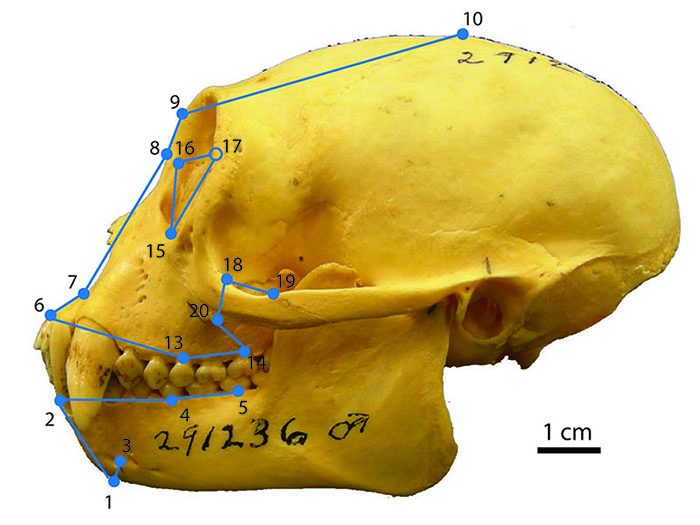
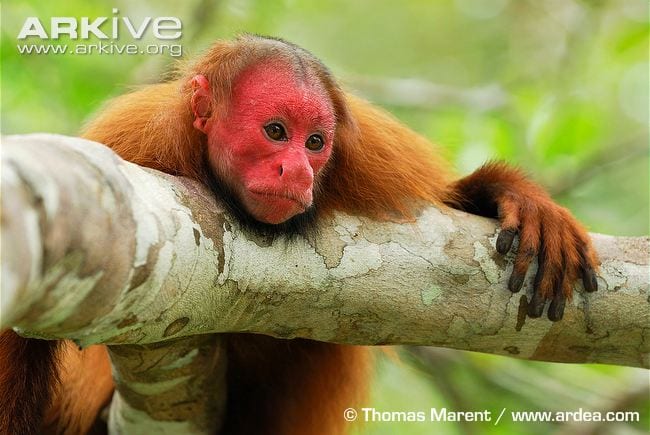
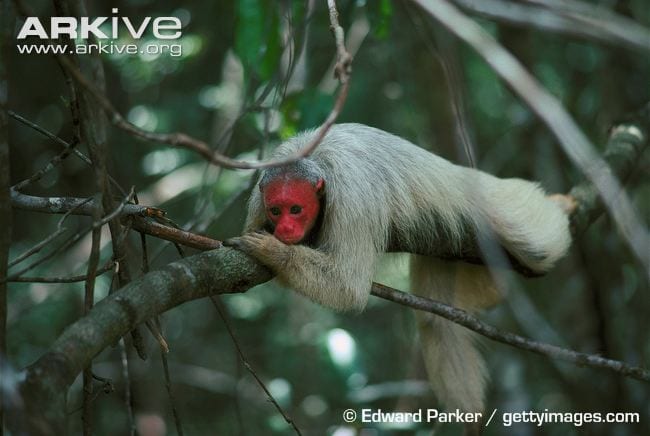
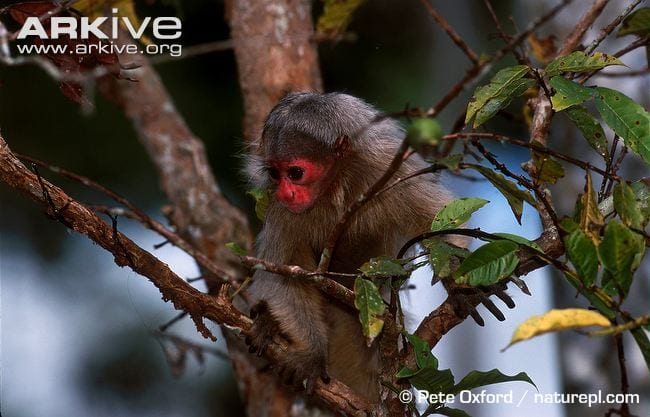

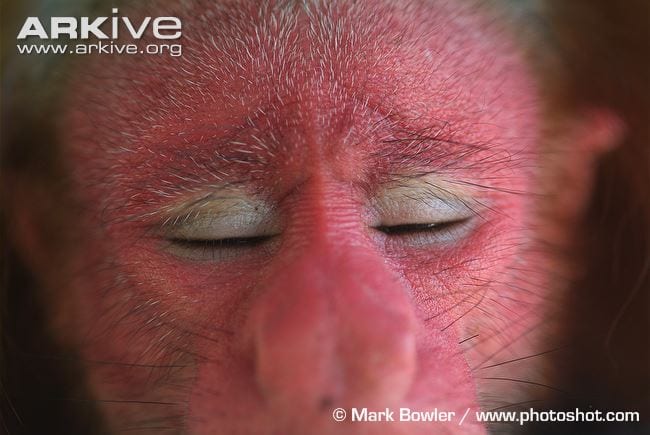

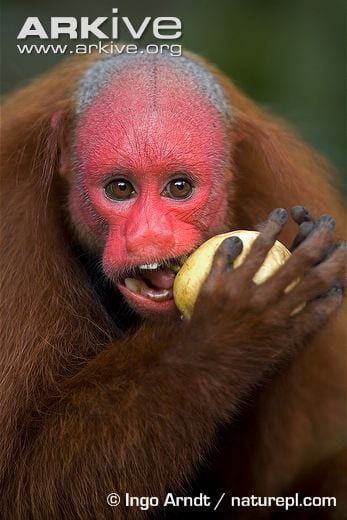
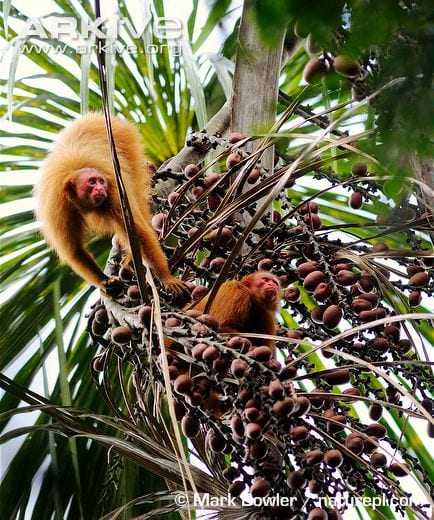
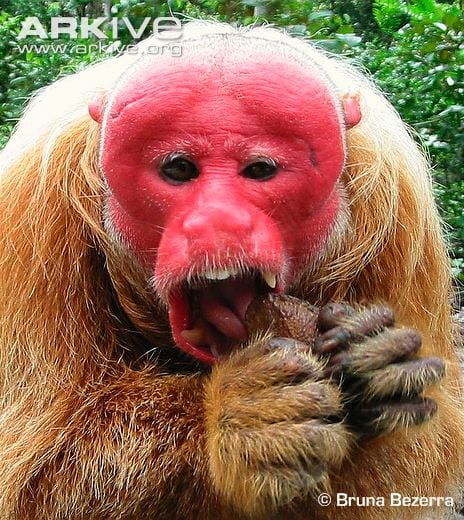

0 Comments